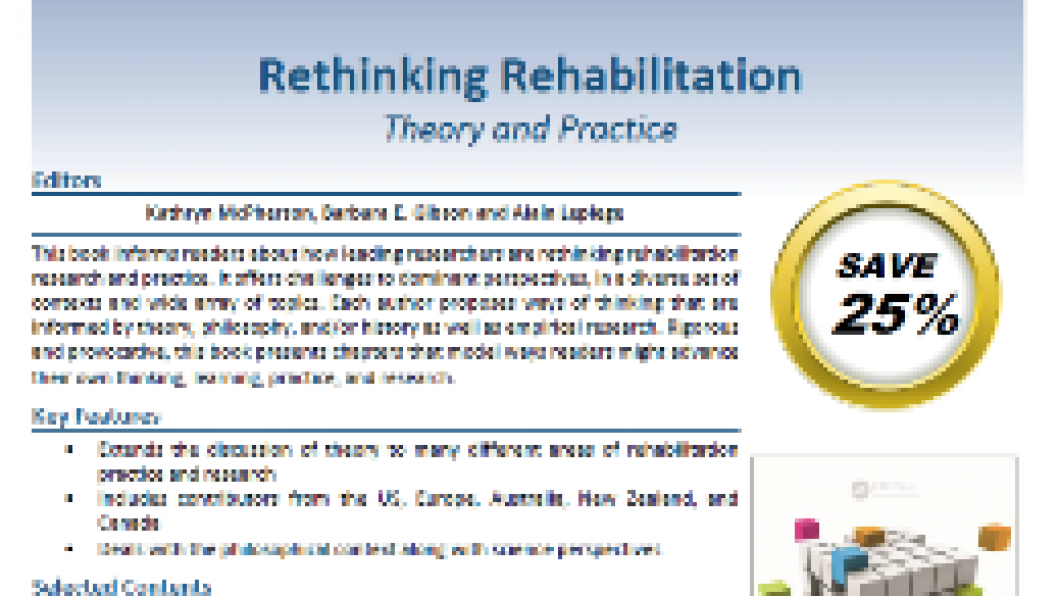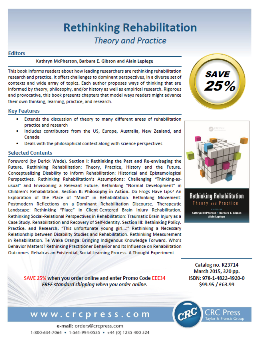
 Bloorview Research Institute (BRI) senior scientist Barbara Gibson, PhD, is the co-editor and co-author of a new book entitled Rethinking Rehabilitation, Theory and Practice, which discusses the role of theory and how it applies to advancing rehabilitation research and practice.This book is available online for purchase here.
Bloorview Research Institute (BRI) senior scientist Barbara Gibson, PhD, is the co-editor and co-author of a new book entitled Rethinking Rehabilitation, Theory and Practice, which discusses the role of theory and how it applies to advancing rehabilitation research and practice.This book is available online for purchase here.
In a chapter dedicated to children’s rehabilitation, Gibson challenges the notion of ‘normal’ development and how it frames our interventions with children and other ways of conceiving what is best, good or right for disabled children. She explores alternate avenues to current practices and what they enable for children with disabilities, including how we might think differently about goal setting, collaboration, communication and outcome measurement.
Question & Answer with Barbara Gibson
Q: Why was this book developed?
Gibson: We wanted to show how philosophy and theory has immediate and practical implications for rehab researchers and practitioners. Much of the book is about applying theory to specific areas of practice or populations that rehab practitioners work with.
Q: What is your vision for what this book will achieve?
Gibson: This book is designed to bridge disability studies and rehab science. People will see within specific chapters about various clinical areas, the discussion of how theoretical models have been used to revamp services/interventions such as traumatic brain injury (TBI) or children’s rehabilitation.
Of note, Susan Guenther-Mahipaul, a former Holland Bloorview client who is now an Occupational Therapist completing her PhD in disability studies, contributed a chapter entitled This Unfortunate Young Girl…: Rethinking a Necessary Relationship between Disability Studies and Rehabilitation which shares how she believes theory can help inform rehabilitation practices, particularly children’s rehabilitation.
An international collaboration, this book received contribution from authors around the world including the United States, Europe, Australia, New Zealand and Canada. It highlights specific areas of development, and contains innovative, forward-thinking content relevant to those focused on rehabilitation.
As one reviewer states:
"I wish this book was around 10 years ago! Many groups of rehabilitation specialists have tried to accomplish what this book has. The scope of the book is exceptional and the depth of information is reassuring. It will set the stage for many discussions about the nature of rehabilitation for many years. All researchers in rehabilitation need to read this book!"
—Professor Linda Worrall, The University of Queensland, Australia